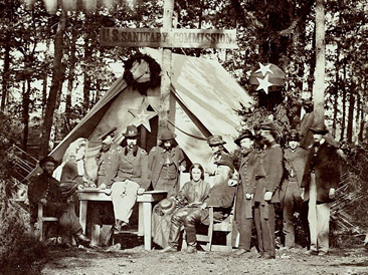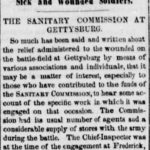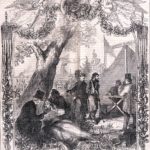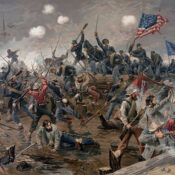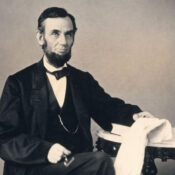This is the third installment of our six-part series on the lead up to Gettysburg. To recap: In part one of this series, “The News from Gettysburg: A Hazardous Move,” we described how the Post covered the initial news of the invasion. In part two, “Scrambling for Soldiers,” we looked at the renewed attention to the draft.
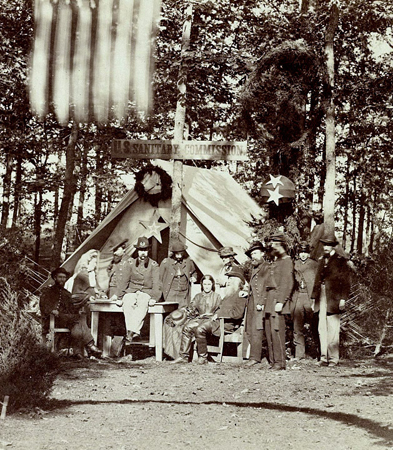
Photo courtesy Library of Congress.
By late June of 1863, three forces were converging on the region around Gettysburg: the Confederate Army, the Union Army, and the United States Sanitary Commission.
The Sanitary Commission was the first large-scale volunteer organization, and it had come a long way in the two years since it was founded in response to widespread disease in Union Army camps. The living conditions in camps were so bad that, over the course of the war, two soldiers died from illness for every one soldier killed in combat.
The commission’s original goal was to keep army bases healthy and clean, and protect their drinking water from contamination. Later, it expanded the scope of its work and broadened its operation to 7,000 local chapters across the Northern states. The commission was based in the North and served the Union Army, but would also help wounded Confederate soldiers that had been captured.
Its army of women volunteers—numbering in the tens of thousands—gathered medical supplies, food, and clothing for the wounded soldiers, and sometimes provided aid to their families. Most important, perhaps, it began providing nursing services after the organization overcame the prejudice of the Army Medical Bureau.
When the commission heard the Confederate Army was marching north, it began gathering information from its agents with the Union Army, who reported the movement of troops and made estimates for the coming battle’s casualties. The Sanitary Commission’s general secretary, Frederick Law Olmsted, told Post readers that its officers used this information to estimate how big the upcoming battle would be and what supplies would be needed. The commission then began distributing supplies to sites in areas close to all the expected targets.
As soon as Olmsted knew the heavy fighting had begun at Gettysburg, he moved operations to a nearby railway junction near the town and obtained railroad cars to run medical supplies up to the front. The commission also sent supplies by wagon, which arrived just as Gen. James Longstreet began his attack on the Union left flank.
The wagons pulled up to the field hospital, just 500 yards from the shooting, where several hundred men were awaiting medical help. According to Olmsted’s account in the August 1 Post, “A surgeon was seen to throw up his arms, exclaiming ‘Thank God! Here comes the Sanitary Commission. Now we shall be able to do something.’ He had exhausted nearly all of his supplies; and the brandy, beef soup, sponges, chloroform, lint, and bandages, that were furnished him were undoubtedly the means of saving many lives.”
Later, wounded soldiers that could still walk made their way to an open field by the railway line and awaited transport to hospitals. They soon discovered the army had no provisions for sheltering them from the rain, or for feeding them as they waited for evacuation. The commission quickly put up tent shelters and set up a kitchen, which fed up to 2,000 wounded men each day.
Throughout 1863, a regular Post column called “Sanitary Commission Department” featured news about the work of the commission. It also included requests for help, like these excerpts from June and July 1863:
We have lately received a letter from Washington, saying that pickles and domestic wines are needed, and that their storehouses have none.
[We have received] the pattern of a ‘Ration Bag,’ with the following remarks as to its usefulness: ‘The idea is to furnish each solider with two bags (one for sugar and one for coffee), to put inside the haversack, so as to keep the two articles from being spoiled, either by being wet from rain or in crossing streams, or by coming in contact with the greasy pork and bacon …’
We have received a requisition for arm-slings, with the following directions for making them: ‘They should be made to fit on the underside of the arm, from the elbow to the hand, and at equal intervals should be furnished with several tapes …’
Occasionally, this department received testimonials, like this letter from a wounded soldier to the “noble ladies” of the Women’s Soldier’s Aid Society of Northern Ohio.
I want to thank you. I was wounded at Stone River on the last day of December 1862, and since then I have run the gauntlet of the hospitals from Murfreesboro to Cleveland. At every stage of my painful progress I was the grateful recipient of your priceless gifts. I owe the preservation of my life to a bottle of blackberry wine, sent to me by Mr. Atwater, Agent of the United States Sanitary Commission at Murfreesboro. It came to me a time when I had scarcely any vitality left. It restored my appetite, which I had lost to the too free use of Morphine. That wine could not have been bought with money; it was the priceless gift of some great-hearted countrywoman—God bless her!
The Sanitary Commission was unique; for the first time, American civilians operated a large-scale, volunteer effort that provided direct help for soldiers. Women living too far from hospitals to nurse the wounded still had a unique opportunity to help the war effort. As one volunteer expressed it, “It is difficult to connect gray flannel and blue yarn with the thought of a great historical movement; yet our work is really in such connection, and each stocking or shirt we make for the soldiers is portion of a story that has never had its counterpart.”
The resources of the Sanitary Commission would be heavily taxed in the coming battle, in which 14,000 Union soldiers were wounded. In the days following the battle, the commission’s agents also provided help to 5,000 rebel casualties who remained behind in 11 Confederate hospitals.
Some of the commission’s hospital workers felt that, even amid the suffering, some of the best traits of humanity—humility, gratitude, compassion—would emerge. As one correspondent wrote, “There is no hospital which could not furnish in volume incidents that would do honor to human nature.”
Coming Next: The Post Reports the Battle of Gettysburg
Become a Saturday Evening Post member and enjoy unlimited access. Subscribe now
